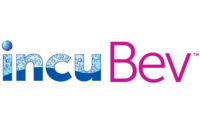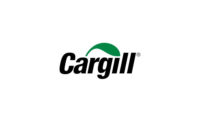
To Market — Faster
Quality-assurance equipment helps dairy processors
move product more efficiently.
by Shonda Talerico Dudlicek
Spurred by growing
consumer and government awareness that food safety and quality are critical
public health issues, dairy processors now face more demanding
pasteurization-testing regulations.
Traditional pasteurization tests, such as the Scharer
Rapid Phosphatase colorimetric test, will no longer be accepted, requiring
new technologies that can provide more sensitive levels of the enzyme
alkaline phosphatase (ALP).
The transition is underway to find testing
technologies that offer dramatically higher performance. Two options
meeting the new ALP limit requirements are the Fluorophos ALP test and
chemiluminescence.
The Fluorophos ALP test is offered by Advanced Instruments,
Norwood, Mass.; and Weber Scientific, Hamilton, N.J.
“It’s based on the same chemistry
used in colorimetric tests, but involves the liberation of a chemical
measured by fluorescence rather than color,” says Ken Micciche,
director of marketing at Advanced Instruments. “It uses an automated
fluorometer and a fluorometric assay. The test is more sensitive, quicker
and more reproducible than older methods. With fluorophos, the instrument
interprets the results instead of a technician. This improves accuracy and
dramatically reduces the evaluation process from 90 minutes to three
minutes.”
A properly performed Scharer test will
effectively determine if a dairy product was fully pasteurized, and a major
benefit is that it only costs pennies per test, says Fred Weber, president
of Weber Instruments, Hamilton, N.J. “As of March 1, 2005, the Food
and Drug Administration will require a pasteurization efficiency test with
detection levels slightly below that of Scharer. Effectively, this can only
be done with a fluorometer-based instrumentation system, such as the
Fluorophos ALP test system,” Weber says. “It offers very fast
and precise results, but at a significantly higher cost” than the
decades-old Scharer test.
Chemiluminescence uses a substrate reagent that
produces a light intensity directly proportional to the amount of
phosphatase enzyme in the sample. The light is scanned by an automated
luminometer that interprets the results, and with a sensitivity level of
0.005 percent raw milk, the new test surpasses the accuracy of the old
test.
But even with a four-minute assay sample time, a
technician must run a stop solution step with each assay. Costs per test
are higher than the fluorophos and a control must be run with each sample.
No sample preparation is needed for fluid white milk, but a five-minute
sample preparation is necessary for other dairy products like cream,
chocolate milk, cheese and yogurt. Chemiluminescence is offered by Charm
Sciences, Lawrence, Mass.
The National Conference on Interstate Milk
Shipments (NCIMS) approves both tests, and though there may be higher
costs with the new technology, the tests offer a better indicator of
pasteurization in milk. Dairy plants are able to improve HACCP programs.
New testing technologies can be used to monitor and verify pasteurizer
performance over time, giving plant managers an early warning and detection
system to reduce unnecessary maintenance expenses, Micciche says.
Improving Analysis
Suppliers are also rolling out other testing
equipment, such as milk analyzers, bacteria counting systems, metal
detection and X-raying to help dairy processors streamline their quality
assurance operations.
Weber Scientific’s LactiCheck milk
analyzer performs dependable multi-parameter test results for fat, solids,
protein, density and added water in 85 seconds and provides fast, accurate
and economical results for raw or processed milks. Weber offers the
single-channel LactiCheck-1, primarily calibrated for whole milk; and the
dual-channel LactiCheck-2, which maintains primary calibrations for both
whole and lowfat milk, testing for a wider range of milk without
re-calibrating the instrument.
“Both low-maintenance models are genuinely
simple to learn and operate and feature streamlined user-friendly
calibrations,” Weber says. “Based on established ultrasound
technology, the instrument does not require any costly, caustic chemicals
or reagents to run. It is compact, lightweight, totally portable and
extremely reliable. LactiCheck affordability makes innovative technology a
viable replacement for standard chemical analytical tests such as the
Gerber or Babcock methods.”
The two models have been used to analyze raw
milk for cheese production at Washington State University and Roth Kase
USA, Monroe, Wis.; fluid milk for standardization at Maple Row Dairy,
Saranac, Mich., and Wendt’s Dairy, Buffalo, N.Y.; and butterfat in a
variety of products at the New Jersey State Department of Health.
“Processors are looking for the ability to
easily and comprehensively document results for accurate record keeping as
well as trend analysis. It can also diminish operator interpretation or
error,” Weber says. “In demand are instruments and systems with
integrated software, or at a minimum, printed results. These features are
now available in many dairy test categories including instruments for
pasteurization efficiency, antibiotic residue, component assay and
sanitation monitoring.”
Weber says dairy processors are also interested in the
company’s SpotCheck Plus hygiene test as a simple and effective
first line of defense in allergen residue control. “This all-in-one
swab device detects invisible amounts of lactose or glucose residue, a
constituent of practically all foods found in a dairy processing
plant,” he says. “With SpotCheck Plus you find out nearly
instantly if any food residue is left on a surface, allowing corrective
action to be taken on the spot.”
Boston-based Thermo Electron specializes in
checkweighing, but its newest offering for the dairy industry is a metal
detector that’s approved to withstand washdown, the IP69K-certified
Thermo Electron DSP IP Metal Detector.
“That is targeted directly at dairy
manufacturers and cheese manufacturers,” says Don Bina,
Thermo’s food industry marketing communication specialist. “If
you don’t have this certification, the equipment has to be covered
during the washdown period. A lot of times, even when the machines are
covered, they lose their sensitivity when they’re wet, so a lot of
care has to be done when you’re going through the harsh washdown time
during the day when you’re switching lines or periodic maintenance.
This metal detector can be exposed to high-pressure and high-temperature
washdowns.”
The IP69K Washdown metal detector can also do X-ray
inspection and will run the full gamut of quality assurance, Bina says.
“In other words, we’re the one-call stop for any type of
contaminant inspection service. We’ve also come up with a new X-ray
technique that is about one-third the cost of a normal X-ray. X-raying has
been kind of a deterrent to a lot of processors because of the cost, so
we’ve come up with a new process that has not lost any sensitivity
but can detect metal and any type of contaminant at this point. It even
replaces a checkweighing system,” he says.
“Say there’s a package with three or four
items in it. The X-ray can tell you if there’s an item missing or a
broken piece. As long as you identify an acceptable package — and we
usually do that by weight — now we can do it through X-ray.
You’re actually doing checkweighing and contaminant inspection at the
same time and that’s pretty significant. If you’re looking at a
block of cheese, you can put in the computer an acceptable weight, a
rejected underweight or rejected overweight so you’re not giving away
product. These are quality assurance tools that most manufacturers and most
processors demand on having.”
Bentley Instruments, Chaska, Minn., has
introduced its bacteria-counting systems, which count the total number of
bacteria in a fluid milk sample using the flow cytometry method. The
company has sold many bacteria-counting systems in Europe, and its
stateside introduction made its debut at Foremost Farms, Baraboo, Wis.
Bentley’s BactoCount IBC is fully
automated, and its high processing speed is ideal solution for larger
laboratories that need an easy-to-maintain, exceptionally fast
bacteria-counting system, analyzing 50 to 150 samples per hour, says Bent
Lyder, president and owner.
The BactoCount IBC-M is a semi-automated
instrument, and the rapid bacteria test is ideal for processing plants or
test laboratories involved in quality assessment on milk. Analyzing time is
less than one minute and sample preparation is completed in less than 10
minutes.
Lyder explains the idea behind the BactoCount
systems is to isolate the bacteria by dissolving chemicals in a small milk
sample so the bacteria floats in a clear fluid. The bacteria is then passed
through a flow cytometer and marked with a fluorescent dye, then passed
through a cytometer, where it’s hit with blue light. Bacteria then
send out little red flashes every time one of them gets hit.
“They become easy to detect. Even if you
pasteurize the milk and then you test the milk on our instrument, then you
will get a bacteria count because we also count the dead bacteria
count,” Lyder says. “It is a total bacteria count, dead or
alive, because you want to know what’s on there. Even if the bacteria
are dead, then it was a sign that the milk was mistreated somewhere along
the line. It shows mismanagement.”
To enable customers to release their dairy
products to the market faster, Celsis International offers three products
exclusively for shelf-stable dairy products: the Innovate, a luminometer;
Innovate.im, a software program; and RapiScreen Dairy reagents. These were
created based on input from existing dairy customers and were designed to
specifically meet their needs, says Roger Tye, director of global marketing
in Chicago for the U.K.-based supplier.
The newest is the Innovate, a luminometer that performs rapid
microbial screening to help release product to market faster.
“What would typically take four to seven
days in a typical market can be reduced down to 48 hours,” Tye says.
“In pasteurized milk you expect a certain amount of bacteria in
there, that’s part of the process, but this is for extended shelf
life, UHT dairy products, anything that should be shelf stable and
sterile.”
Tye says the shelf-stable dairy product segment
is moving toward rapid testing methods because it is more standardized than
traditional methods like the agar plate streaking of samples and
interpreting results. “It takes a less-discerning eye. You
don’t have to have as much of a scientific background to run our
systems,” Tye says.
This standardization enables dairy processors to
better manage testing data, and this streamlining and automation is part of
a larger trend, he says.
Data Checking
Schaumburg, Ill.-based Omron Electronics
offers its F210 CF date verification vision sensor, which focuses on
optical character recognition and monitors printed codes for readability
and rejects packages with unreadable, incomplete or missing codes.
Concurrently, defects are noted so corrections can be made before
large numbers of products are affected, says Jen Pulins, public relations
manager.
“Savings in material waste can be
substantial, and customer confidence is maintained as only clearly marked
products go to market,” Pulins says. The F210 CF enables complete
inspection of codes inline and the system automatically updates date codes
daily without operator intervention and recognizes various date formats,
including ‘manufactured on’ and ‘best before’
configurations.
“Setup and changeover is simplified and can be
done through a hand-held keypad rather than a PC,” Pulins says.
Extensive internal character libraries eliminate the need for teaching
characters.” df
Shonda Talerico Dudlicek is a freelance journalist and
a former managing editor of Dairy Field.
$OMN_arttitle="To Market - Faster";?>
